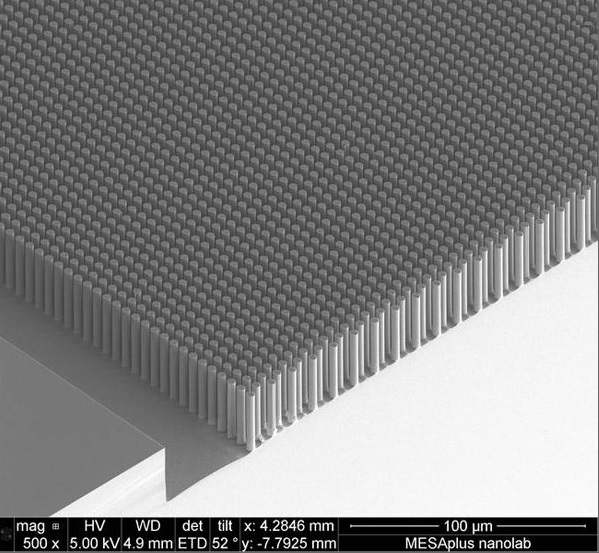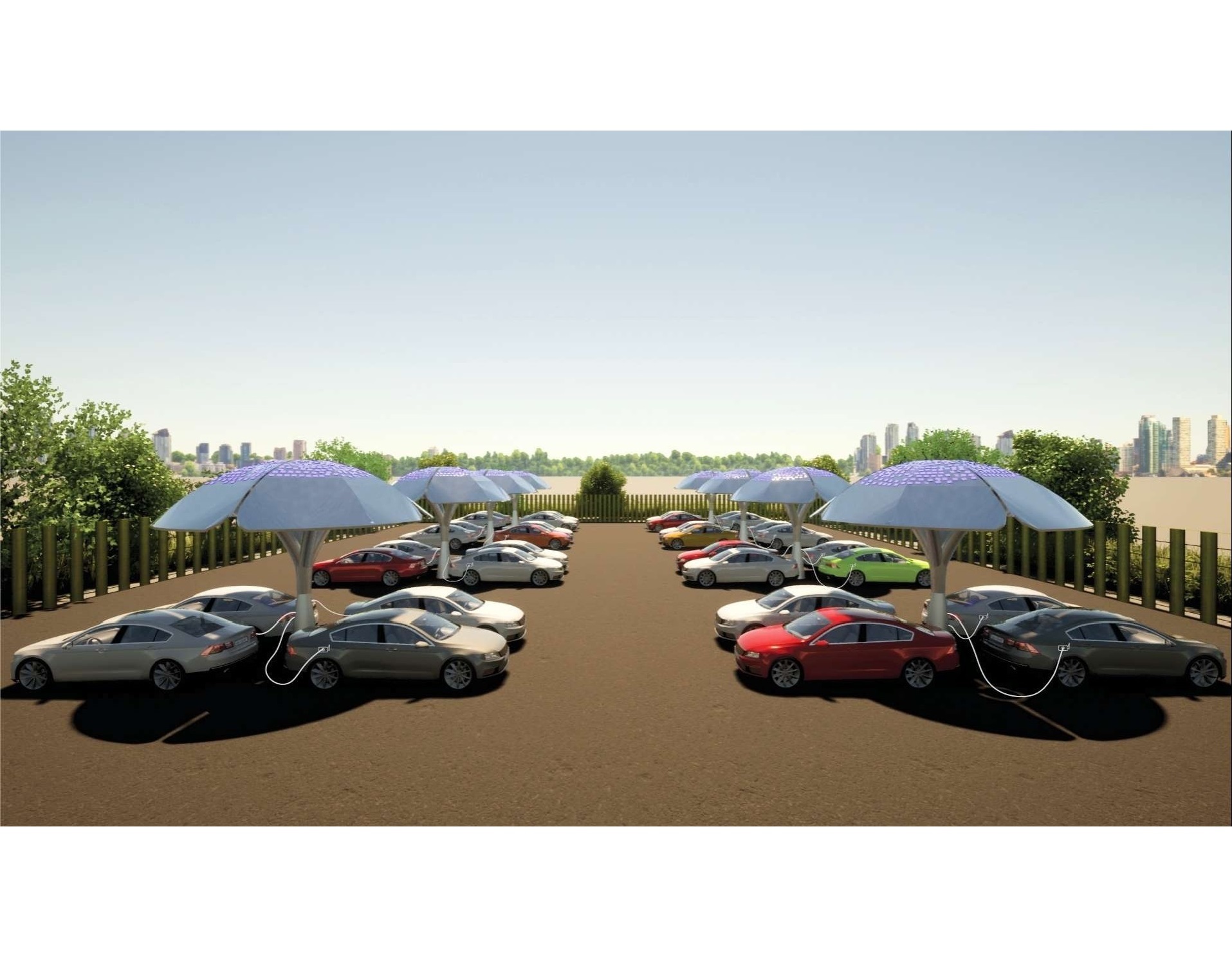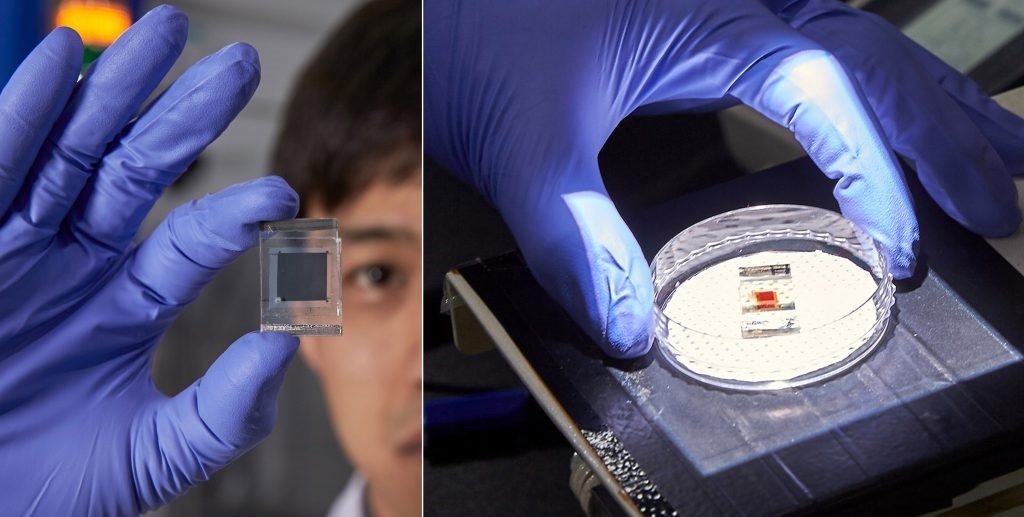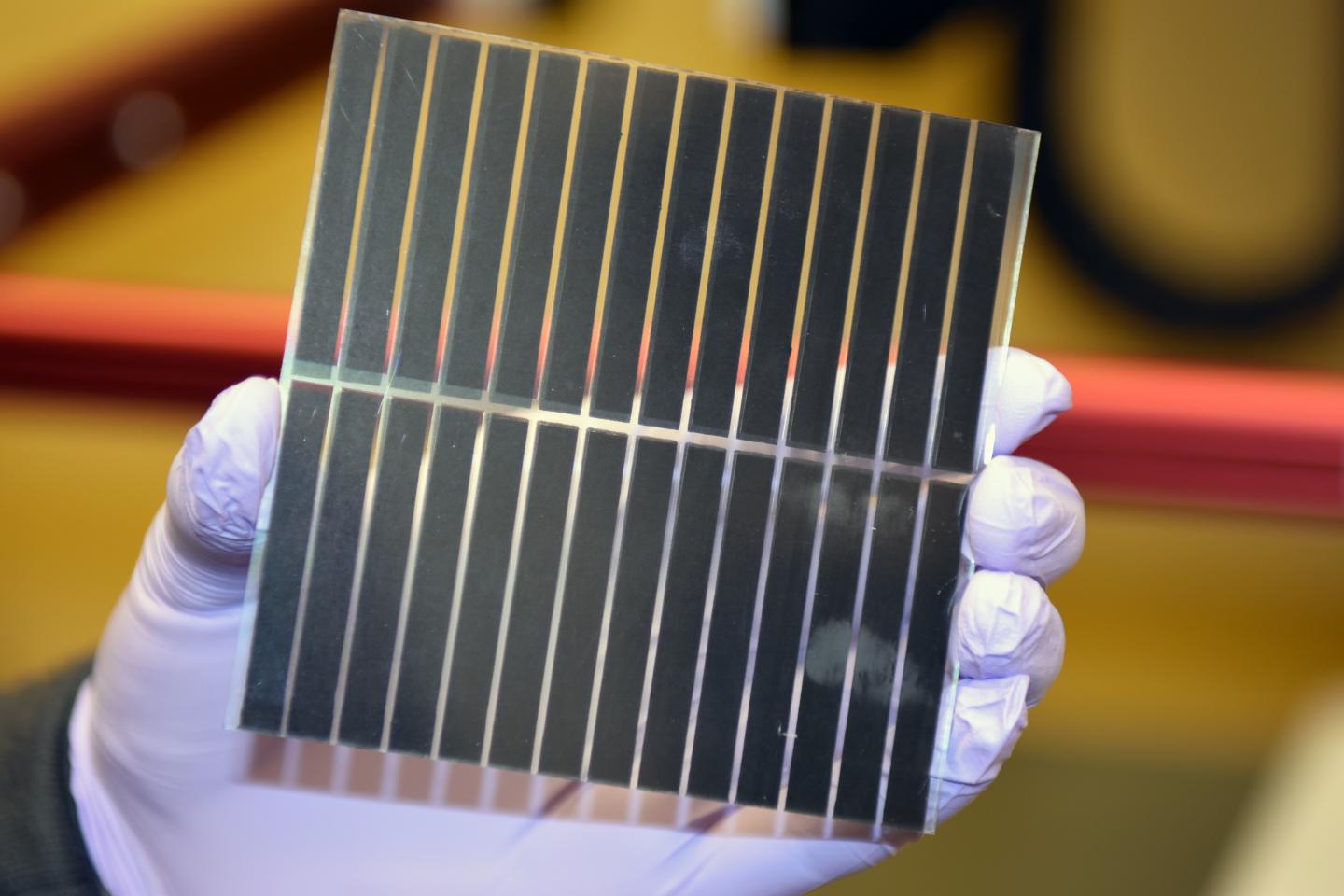2 December 2014
By equipping a semiconductor, with which you can convert sunlight into electricity, with micropillars, you can increase the surface and efficiency. Creating a so-called P/N junction in these micropillars, which follows the 3D structure of the surface, is essential in this to be able to properly separate the positive and negative charge in the structure. Scientists of the UT research institute MESA+ have for the very first time succeeded in accurately visualizing these P/N junctions in semiconductors in 3D. They created a semiconductor with a million minuscule micropillars per square centimetre and succeeded in accurately portraying the P/N junction with an electron microscope. The research has been published in the prominent scientific journal Advanced Energy Materials.
Silicon that has been 'polluted' with, for example, boron (P-type) or phosphorus (N-type) is better at conducting electricity. This 'pollution' is better known as doping in English. By connecting a P-type silicon and an N-type silicon to each other to form a P/N junction you create a semiconductor as present in solar cells, in which the positive and negative charge carriers (electrons and 'holes') move towards different sides of the structure.
SIGNIFICANT INCREASE IN EFFICIENCY
Researchers of the University of Twente have succeeded in creating P/N junctions in 3D-structured silicon, which is equipped with large amounts of minuscule micropillars. They succeeded in accurately checking the measure of doping, which resulted in a P/N transfer that is present in the entire structure and at the same distance of the surface everywhere. They could accurately portray the P/N transfer in three dimensions with the help of a scanning electron microscope. They also showed that their structures showed a significant increase in efficiency in the transfer of sunlight to electricity. The reasons for this is that the charge always only has to bridge a minimal distance within the structure. The acquired knowledge is relevant for improving the efficiency of, for example, solar cells.
The research is part of a larger research project of four different departments of the UT research institute MESA+. The four departments are working together on a so-called solar to fuel-machine, with which you can directly convert the energy from sunlight into a fuel (in this case hydrogen).
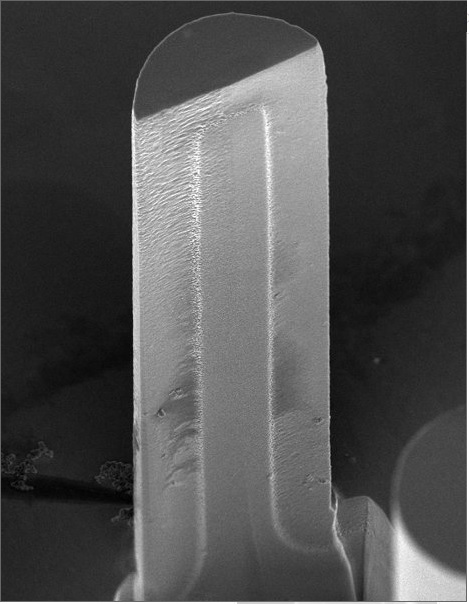
RESEARCH
The research that has currently been published in Advanced Energy Materials has been performed by Rick Elbersen, Roald Tiggelaar, Alexander Milbrat, Guido Mul, Han Gardeniers and Jurriaan Huskens of the departments Molecular Nanofabrication, Mesoscale Chemical Systems and Photocatalytic Synthesis.

